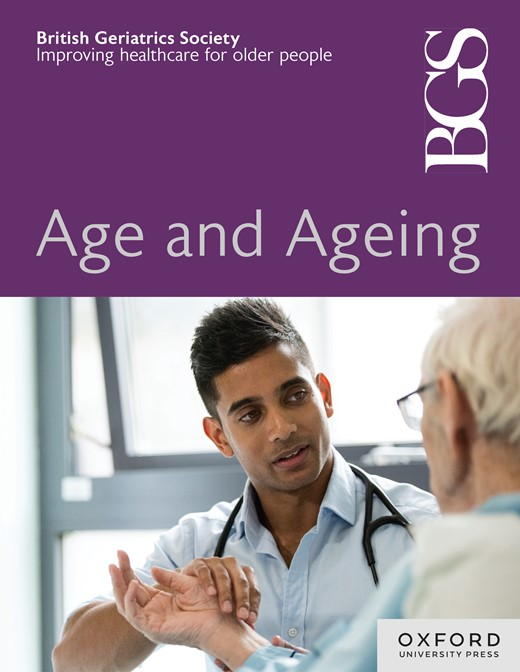2638 First study of cardiovascular risk estimation using Globorisk in a Latin American geriatric cohort with COPD
IF 6
2区 医学
Q1 GERIATRICS & GERONTOLOGY
引用次数: 0
Abstract
Introduction It is expected that by the fourth decade of the 21st century, chronic obstructive pulmonary disease (COPD) will become the third leading cause of death worldwide. These data require awareness among treating physicians of these patients. Methods A pilot study was conducted from January 2020–December 2022 in a South American health institution in which cardiovascular risk was estimated using GLOBORISK and ATP-III criteria. Data derived from the metabolic profile included in the ATP-III criteria were collected. Quantitative variables are presented as mean ± standard deviation or median (interquartile range) according to their distribution and qualitative variables as percentages. Student’s t-test was performed to evaluate differences between two variables. All statistical analyses were performed with (SPSS for Windows, v.22.1; Chicago, IL). Results The present study showed that metabolic syndrome variables in these patients were elevated. Male sex was 77% and female 23%, smoking 61%. The GLOBORISK equation found mostly patients with low to moderate cardiovascular risk. It was found that there was a higher cardiovascular risk in those patients with FEV1 less than 30%, showing a statistical correlation of this alteration for the GLOBORISK scale. Conclusions This is the first pilot study that estimates cardiovascular risk using GLOBORISK in the COPD population. We consider integrating national and international networks to compare the results found here.2638在拉丁美洲老年COPD队列中使用Globorisk进行心血管风险评估的首次研究
预计到21世纪第四个十年,慢性阻塞性肺疾病(COPD)将成为全球第三大死亡原因。这些数据需要治疗这些患者的医生的认识。方法2020年1月至2022年12月在南美一家卫生机构进行了一项试点研究,使用GLOBORISK和ATP-III标准估计心血管风险。收集ATP-III标准中代谢谱的数据。定量变量根据其分布以均数±标准差或中位数(四分位间距)表示,定性变量以百分比表示。采用学生t检验来评价两个变量之间的差异。所有统计分析均使用SPSS for Windows, v.22.1;芝加哥,IL)。结果本研究显示,这些患者的代谢综合征变量升高。男性占77%,女性占23%,吸烟占61%。GLOBORISK方程发现,大多数患者的心血管风险为低至中度。研究发现,FEV1小于30%的患者心血管风险较高,这与GLOBORISK量表的变化具有统计学相关性。这是首个使用GLOBORISK评估COPD人群心血管风险的试点研究。我们考虑整合国内和国际网络来比较这里发现的结果。
本文章由计算机程序翻译,如有差异,请以英文原文为准。
求助全文
约1分钟内获得全文
求助全文
来源期刊

Age and ageing
医学-老年医学
CiteScore
9.20
自引率
6.00%
发文量
796
审稿时长
4-8 weeks
期刊介绍:
Age and Ageing is an international journal publishing refereed original articles and commissioned reviews on geriatric medicine and gerontology. Its range includes research on ageing and clinical, epidemiological, and psychological aspects of later life.
 求助内容:
求助内容: 应助结果提醒方式:
应助结果提醒方式:


